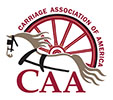
The cowboy was using a horse tie down, sometimes called a horse tether, hitch stone or tie weight. They were normally made of cast iron and weighed around 20 pounds. They took the place of a hitching post if there simply wasn’t a hitching post available. Tradesmen of the day sometimes called them higglers.
…what type of carriage did they use?


Buggies are typically one person, four-wheeled vehicles, like a Doctor’s Buggy, and were quite speedy. They were originally developed in London around 1796 but were very popular in America. In Westerns it became a generic term for a horse-drawn vehicle particularly as the carriage industry changed and began making two-person buggies. The average price in 1900 was about $40 but could be as low as $25. Buggies were made by nearly every carriage maker in America and were at one point mass produced.
…those horses sure seemed like they had some miles on them.
When the ‘west was won’ horses were very much viewed as a source of transportation. Some cowboys had their favorites but by and large horses were not viewed as pets the many see them today. At the CAA’s International Carriage Symposium, Katherine Graves talked about a horse named Nevada that was part of the Stagecoach runs in California. It is documented that he traveled 80,300 miles!
….there was an old muleskinner doing some fancy whip work. Could they really do that?
Indeed they could! In Whips and Whipmaking by David W. Morgan, whips used with mule teams were commonly 14-16 feet long. Mules learn differently from horses, once hit they respond to the whip as a threat – you don’t have to hit them again, they respond to the noise. A good driver, be it for mules or horses, always has control of their whip and learns how to touch one animal while not interfering with rest of the horses/mules in the team.
Resources:
Higglers – The Carriage Journal, Autumn 1972
Buggies – Carriage Terminology: An Historical Dictionary by Don H. Berkebile
Katherine Grave’s Talk
